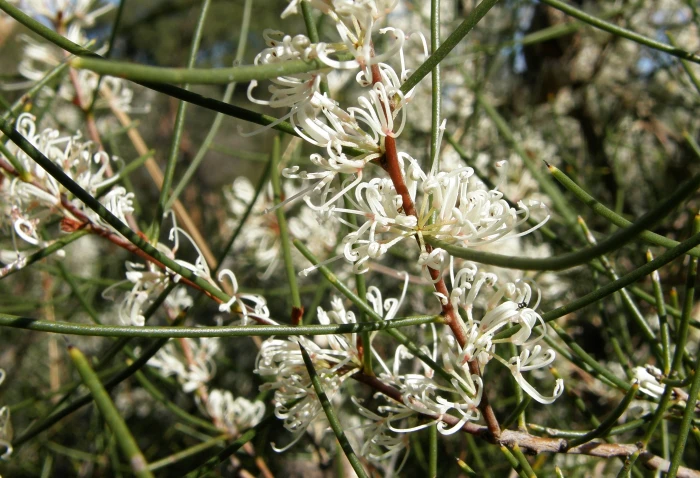Beaked Hakea
(Hakea rostrata)
Beaked Hakea (Hakea rostrata)
/
/

Linley McGlashan
CC BY 2.5 au
Image By:
Linley McGlashan
Recorded By:
Copyright:
CC BY 2.5 au
Copyright Notice:
Photo by: Linley McGlashan | License Type: CC BY 2.5 au | License URL: https://creativecommons.org/licenses/by/2.5/au/deed.en | Uploader: Gderrin | Publisher: Wikimedia Commons | Title: Hakea_rostrata.jpg | Notes: |
































Estimated Native Range
Climate Requirements for Hayward, California
| This Plant | Your Site | Plant Suitability for Your Location | ||
|---|---|---|---|---|
| • Precipitation | 11" - 44" | 16" | Your precipitation may be insufficient for this plant. Irrigate N" / year. | Irrigate N" / year |
| • High Temp. | 73°F - 89°F | 80°F | Your summer temperatures are normal for this plant. | Excellent |
| • Low Temp. | 38°F - 48°F | 41°F | Your winter temperatures are normal for this plant | Excellent |
This plant should grow well at your location with about N inches per year (Y minutes per month) of irrigation.
Summary
Hakea rostrata, commonly known as Beaked Hakea, is an evergreen shrub native to the sclerophyll forests and coastal heaths of southeastern Australia, particularly Victoria. It typically grows to a height of 1–4 meters with a spreading habit. Beaked Hakea is characterized by its stiff, needle-like leaves and conspicuous woody fruit that resemble a bird’s beak. The white flowers, which bloom in winter, are relatively inconspicuous compared to the prominent fruits that follow. The plant’s unique fruit and foliage add textural interest to gardens throughout the year.
Beaked Hakea is valued for its drought tolerance and ability to thrive in nutrient-poor soils, making it suitable for xeriscaping and as a low-maintenance ornamental in dry gardens. It is also used for habitat restoration and as a windbreak or screen due to its dense growth. In cultivation, it requires full sun exposure and well-drained soils, with minimal water once established. While generally pest-resistant, it can be susceptible to root rot in poorly drained conditions. Beaked Hakea is not known for being invasive outside its native range, but gardeners should be cautious of its sharp leaves when planting in areas frequented by people or pets.CC BY-SA 4.0
Beaked Hakea is valued for its drought tolerance and ability to thrive in nutrient-poor soils, making it suitable for xeriscaping and as a low-maintenance ornamental in dry gardens. It is also used for habitat restoration and as a windbreak or screen due to its dense growth. In cultivation, it requires full sun exposure and well-drained soils, with minimal water once established. While generally pest-resistant, it can be susceptible to root rot in poorly drained conditions. Beaked Hakea is not known for being invasive outside its native range, but gardeners should be cautious of its sharp leaves when planting in areas frequented by people or pets.CC BY-SA 4.0
Plant Description
- Plant Type: Shrub
- Height: 3-12 feet
- Width: 3-12 feet
- Growth Rate: Moderate
- Flower Color: White
- Flowering Season: Winter
- Leaf Retention: Evergreen
Growth Requirements
- Sun: Full Sun
- Water: Low
- Drainage: Medium, Fast
Common Uses
Bird Garden, Butterfly Garden, Drought Tolerant, Low Maintenance
Natural Habitat
native to the sclerophyll forests and coastal heaths of southeastern Australia, particularly Victoria
Other Names
Common Names: Beaked Pincushion Tree
Scientific Names: Hakea rostrata, Hakea pampliniana, Hakea lurida
GBIF Accepted Name: Hakea rostrata F.Muell.